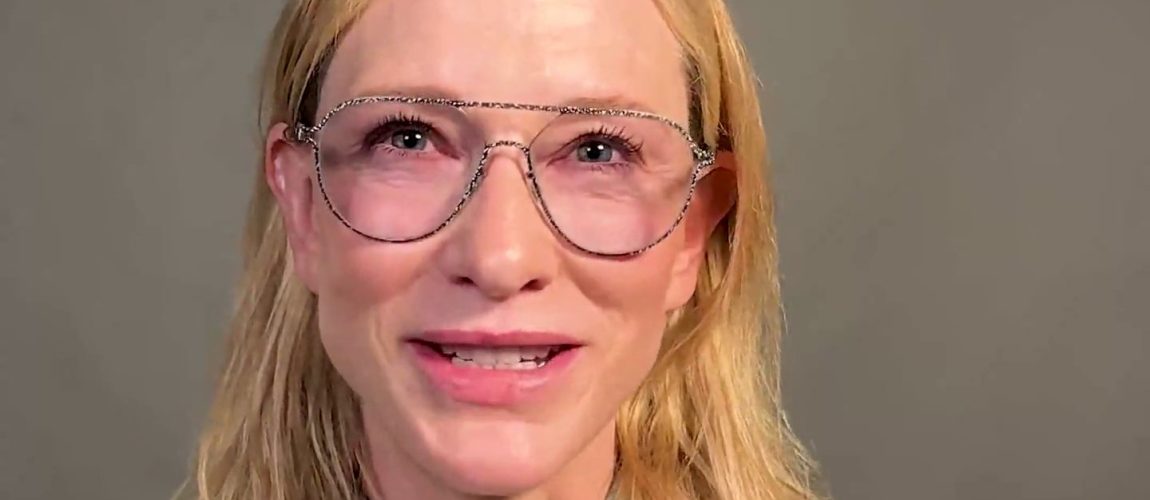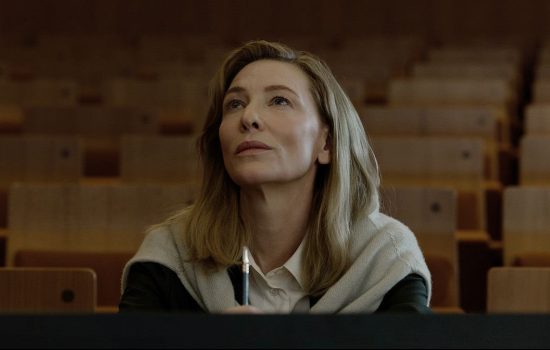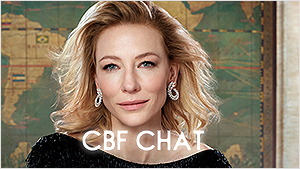Today is World Refugee Day, and UNHCR Goodwill Ambassador Cate Blanchett recites lines from Bob Dylan’s song, Shelter from the Storm.
You can follow UNHCR on their social media platforms (Twitter, Facebook, Instagram, YouTube) for updates and you can also help spread awareness of the plight of refugees by sharing their posts. If you would like to donate, you can follow the link here.
There is also new interview on Toku Saké.
Thank you to Frauke, Sue, Norma, Natalia, and Meryl for their donation to the site. The site’s hosting renewal deadline is in August and we appreciate any amount that will be donated. You can click on the donate button below this post or on the right side bar (when viewed on desktop).
For #WorldRefugeeDay, UNHCR Goodwill Ambassador Cate Blanchett recites from Bob Dylan’s ‘Shelter from the Storm,’ capturing a spirit of welcome and mutual respect. Let’s create a world where all refugees are welcome. #WithRefugees
Listen to the full song: https://t.co/FneSCzFYUP pic.twitter.com/nBqbp9biI1
— UNHCR, the UN Refugee Agency (@Refugees) June 18, 2024
Cate Blanchett discusses Toku Saké and her personal connection with Japanese culture
FOODISM: You’ll have to bear with me; I’m a little nervous!
CATE BLANCHETT: It’s the same for me before I go out on stage or in front of the camera. It never changes. I always tell myself, you know, nervousness is just the flip side of excitement. So we’re excited, aren’t we?
F: Definitely! Can you tell me a little bit about your relationship with Japan?
CB: Well, I grew up in the Asia Pacific region. Two of my best friends when I was growing up were from Japanese families. My father died when I was very young, and I was rifling through his desk and found this book of haiku poetry. I sort of had these strange little tastes of Japan, having never travelled there until I was older, and so I thought that I was going to end up having some sort of connection with the country.
And then I started working with a Japanese skincare company named SK-II a long time ago, maybe 15 years. I spent a lot of time in sake breweries because there was an ingredient in skincare that came from the fermentation process. Having enjoyed sake as a student, mostly hot, I didn’t understand its complexity.
I then became fascinated by the process of making it. And so through these experiences I went deeper into the category and started to enjoy cold sake and realised how much pleasure there could be in pairing it with non-Japanese cuisine, right? It all started with these very visceral experiences with the sake.
F: Are there any specific foods that you like to pair Toku with?
CB: We were just talking about that – so funny that you should ask! Because it’s so refined, elegant, crisp and clean, and it’s really lush, we were saying that you could have it with something like fish and chips, even. It’s such a generous liquid that it brings out the best in whatever you’re eating. A lot of sommeliers have said that you can match it with difficult-to-pair foods like rich broths or asparagus or dishes that might have a slightly bitter taste; it really complements all of that.
And this pairing can be more than the sum of the parts. So, one plus one can be three, you know, it really is about that idea of fruitiness. A junmai daiginjo sake has lovely fruity aromas, but it’s balanced by that umami taste over the tongue with a long finish. It gives it a sort of roundness which makes it very versatile. This is part of the exciting journey that we have ahead of us: to find those new pairings. And so this is a journey of discovery for us, too, which is part of the whole reason we want to get the West more interested in trying sake.
F: Will Toku change Western attitudes toward sake?
CB: I think it’s been a mysterious category that a lot of people find impenetrable. But once you start to experience it, and particularly something as refined as this, it can make a cocktail sing, and suddenly you’re thinking ‘What’s that ingredient?’
before you realise it’s the sake. It’s brewed as a beer but enjoyed as a wine. The process of being matured, unpasteurised, means that its life is longer, and you can keep it in the fridge ready for cocktails during the summer.F: What drew you to Toku initially?
CB: I’ve been wanting to be involved in the creation of a sake for a very long time. And, when I discovered Toku, I wouldn’t call it stalking exactly, but it was akin to stalking. I had a friend who had said that he tried the sake and it was like nothing he’d ever tasted before. And I said, “Yeah, sure. Right.” And we met and not only did I warm to the team’s sense of respect for the traditions of sake-making but also the generous urge and passion to share it with the Western consumer. And so I felt we were on the same page in that way. But once I tried the sake I thought ‘Okay, well, the search is over’. It was the respect and love of the tradition that drew me to Toku, but also that I think we have a similar aesthetic and I really love the quiet confidence that speaks to the elegance of the liquid.
F: Are there many other junmai daiginjo breweries in Hokkaido?
CB: Well, I think only about 16. Yeah, and not many of them export. Most of it is consumed within Japan so I feel really privileged to be involved in one that’s made it out. It’s kind of a rarity. Hokkaido is the largest prefecture in Japan and the northernmost and coldest. It’s got the coldest city which is where our brewery is based – Asahikawa. The brewery is 125 years old. Sake only comes from three or four ingredients and it’s lovely to know that the water comes from these beautiful mountains that surround the valley where the brewery is based – pristine water that has fallen as light snow from the Pacific and ended up in our porcelain. It’s lovely, it’s a privilege. I don’t think it’s me just imagining, I think you can taste how crisp and clear that snowy quality is of that pure water. When things are made in beautiful places, the result is often incredibly beautiful too, fittingly.
F: Favourite place to drink Toku?
CB: You know, I like it so much, I think I would even drink it in this room [we are conducting the interview in a storeroom]! It would even make this room beautiful! No, but what I do love and I think it’s something that we all connected on, is the love of ritual. And I love sharing meals with friends, I’d much rather do that than go to a big party. Although I think Toku makes a great cocktail mixer, I do love the ritual of pouring sake for people and enjoying it with a meal of Japanese origin; that’s what I’m really excited about.
F: Do you have any favourite Japanese restaurants that you like to drop into when you’re in London?
CB: Well, look, if you can get me into Juno. It’s got six seats in Notting Hill. If you can get me in, I’ve been desperate to get it under my belt.
F: I’ll certainly do my best.
CB: Will you? It’s an omakase restaurant and so far I’ve not been able to get in, but if you know anyone…
F: I’ll look into it.
CB: I’ll give you my number! But no, I love that we’re in fun places like Zuma, Annabel’s and the Fat Duck. It’s not only in Japanese restaurants.
F: Well, thank you so much, I don’t even feel nervous anymore.
Source: Foodism

or by using the QR code
 Welcome to Cate Blanchett Fan, your prime resource for all things Cate Blanchett. Here you'll find all the latest news, pictures and information. You may know the Academy Award Winner from movies such as Elizabeth, Blue Jasmine, Carol, The Aviator, Lord of The Rings, Thor: Ragnarok, among many others. We hope you enjoy your stay and have fun!
Welcome to Cate Blanchett Fan, your prime resource for all things Cate Blanchett. Here you'll find all the latest news, pictures and information. You may know the Academy Award Winner from movies such as Elizabeth, Blue Jasmine, Carol, The Aviator, Lord of The Rings, Thor: Ragnarok, among many others. We hope you enjoy your stay and have fun! 




 A Manual for Cleaning Women (202?)
A Manual for Cleaning Women (202?) The Seagull (2025)
The Seagull (2025) Bozo Over Roses (2025)
Bozo Over Roses (2025) Black Bag (2025)
Black Bag (2025)  Father Mother Brother Sister (2025)
Father Mother Brother Sister (2025)  Disclaimer (2024)
Disclaimer (2024)  Rumours (2024)
Rumours (2024)  Borderlands (2024)
Borderlands (2024)  The New Boy (2023)
The New Boy (2023) 











